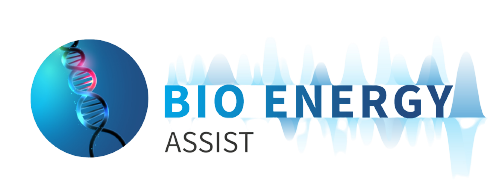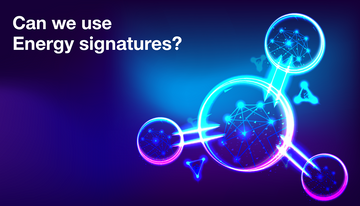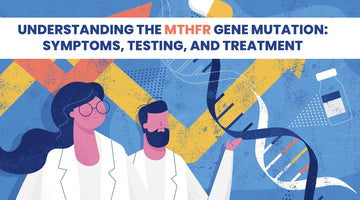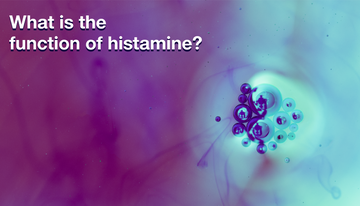Resonance:
Every object has a certain natural or resonant frequency. If you bump it, it will tend to vibrate at a specific frequency. It can be a bone, a piece of wood, a molecule, an atom, an electron, or the string of a violin. When two objects have similar natural frequencies, they can interact without touching. Indeed, their vibrations can become coupled. For electromagnetic interactions between molecules, we often use the word resonance.
One way to understand resonance is to think of it as a form of communication between molecules. Molecules send and receive signals through electromagnetic waves that carry information about their structure and function. These signals can be detected by other molecules that have similar frequencies and shapes. When two molecules resonate, they exchange energy and information, and they may change their behavior accordingly.
For example, when we smell something, we are actually sensing the resonance between the molecules in the air and the receptors in our nose. The receptors are proteins that have specific shapes and frequencies that match certain odor molecules. When an odor molecule binds to a receptor, it triggers a nerve impulse that travels to the brain and creates a perception of smell.
Another example is when we take a medication or a supplement. The molecules in the drug or the nutrient have specific frequencies that resonate with certain cells or enzymes in our body. They may activate or inhibit certain processes that affect our health and well-being.
Resonance can also occur between larger structures, such as organs or systems in our body. Each organ has its own frequency range that reflects its optimal function and health. When an organ is diseased or damaged, its frequency may change and become out of sync with the rest of the body. This can cause problems in other organs or systems that depend on its function.
Spectroscopy:
Above the absolute zero temperature, molecules vibrate intensely. Because molecules contain atoms that are charged electrically their vibrations give rise to electromagnetic fields that can travel throughout the body. When charges move, magnetic fields are created in the surrounding region, and when charges oscillate, electromagnetic fields are produced that can travel considerable distances. The emission of electromagnetic fields by vibrating molecules is the basis for spectroscopy. Spectroscopy is a well-established and highly refined technology that enables scientists to determine the detailed structure of atoms and molecules.
Not only does each vibrating molecule emit a characteristic set of electromagnetic frequencies, similar molecules a distance away will also absorb the same frequency from their environment. Such absorptions can be measured to provide an absorption spectrum. Similarly shaped molecules will resonate with each other. It is called the tuning fork effect.
Spectroscopy provides much of the information we have on atomic and molecular behavior. A molecule contains various charged components column protons, electrons, and side groups such as the amino acids. Each of these charges has an electric field around it. When a charge moves or rotates, the electric field moves or rotates. This sets up electromagnetic fields that are radiated into the environment. The opposite is also true : specific frequencies in the environment can be absorbed by a molecule, including movements of the component parts. In real life molecules are constantly vibrating and emitting and absorbing electromagnetic frequencies. They resonate.
The substance such as water strongly absorbs a variety of frequencies that we cannot see. Different kinds of motions taking place within molecules result in the emission or absorption of different types of energy fields.
Spectrum or energy signature
Spectrometers of various kinds are used to measure the emissions and absorptions of molecules. Technically the radiation or absorption pattern is called a spectrum. It is a graph of energy intensity versus frequency or wavelength. The peak of the spectrum represents a frequency that is absorbed by bending or stretching or rotation of a particular bond within the molecule.
Every molecule in the body vibrates in specific ways and emits characteristic energy spectra. Complex molecules contain thousands or even millions of atoms, and the spectra can be quite intricate. The spectrum is an electromagnetic signature or fingerprint of a molecule that is an extremely precise representation of the motions of the particles within it. Chemists use them to identify substances.
Energy Symphony orchestra and molecular surgery
In terms of frequencies, living organisms can be compared to a Symphony Orchestras. Each molecule could be seen as a musical instrument in the orchestra. Each rotation, each bend, or stretch of a chemical bond has a certain resonant frequency and will radiate certain frequencies (like different musical notes), if it is energized. In real life, since molecules, water, and dissolved ions are bumping into each other constantly, all parts are constantly absorbing and emitting specific frequencies.
One might look at a chemical process as a mechanical event, but at a deeper level, this event is better described as a series of vibratory energetic interactions.
Skilled soprano singers can shatter a crystal glass by singing a high note coinciding with the natural frequency of the glass. One can watch such an example on YouTube. The atoms in the glass vibrate so strongly that the glass breaks. The same thing can happen to a molecule. They can also be fractured because of a specific vibration. This is called molecular surgery. This provides a biophysical basis for controversial vibrational therapies in which toxins that have been stored in the body can be broken apart by energy fields. When such a complex molecule is shattered by vibrations, its fragments can be detoxified and excreted from the body.
Molecules transmitters and receptors
Molecules are too small to be seen even by the most powerful microscope. Those only give us a fuzzy outline of a molecular shape. Fortunately, we know that molecules are composed of atoms, which are made of electrons. Virtually all our knowledge about molecules, until recently, and about matter in general has come from studying the way light interacts with electrons.
Molecules interact with each other and create joined energy fields together. Imagine the rotation of a charged amino acid that sets up an electromagnetic field that entrains rotations of the corresponding amino acid on a second protein. The second protein also emits an electromagnetic field that affects other proteins. Consequently, molecular motions and energy fields join together to form a continuous energy system. It has been shown that the crystal-like organization of molecules in living systems enhances this phenomenon.
A mitochondrion is made of many molecules joined together, for example, and it has an energy signature as well. A cell is made of organelles, nucleus, etc. joined together and has a typical energy signature as well. Different cells show different energy signatures. The same goes for tissues, etc.
Those joined molecules and cells and tissues transmit and receive energies. This can be used in therapy when a molecule, a cell or a tissue is not shaped or formed properly, when it doesn’t function well. Those molecules, cells or tissues can be entrained to get healthier.
What kind of energy signatures could be used?
Have you ever wondered how the energy signature of molecules can be applied to our cells? I will now explain what energy signatures are, how they can be measured, and how they can reveal important information about the health and function of our cells.
Every molecule has a different energy signature, depending on its structure, composition, and environment. Energy signatures can be detected by using spectroscopy, as explained above, a technique that analyzes the spectrum of light that passes through or reflects from a sample.
By measuring the energy signatures of molecules in our cells, we can gain insights into the cellular processes that involve them, such as metabolism, signaling, gene expression, and stress response. We can also detect changes in the energy signatures that may indicate cellular dysfunction or disease. For instance, energy signatures can reveal alterations in the structure or function of proteins that are associated with neurodegenerative disorders, such as Alzheimer's or Parkinson's disease.
Beyond detection, some energy signatures can be used to entrain molecules, like enzymes.
One of the most fascinating aspects of biochemistry is the role of energy signatures in molecular interactions. Energy signatures are the unique patterns of electromagnetic waves that are emitted or absorbed by different molecules, such as enzymes, proteins, DNA, etc.
But energy signatures are not just passive indicators of molecular properties. They can also actively influence the behavior of molecules, especially when they are in resonance with each other. Resonance is a phenomenon where two or more oscillating systems, such as waves, vibrate at the same frequency or a multiple of it. When resonance occurs, the systems can exchange energy and synchronize their motions.
This means that some energy signatures can be used to entrain molecules, like enzymes, and modulate their activity. Entrainment is a process where one system influences another to adopt its rhythm or frequency. For example, if an enzyme has a natural energy signature of 100 Hz, and it is exposed to an external energy source of 200 Hz, the enzyme may entrain to the external source and start oscillating at 200 Hz as well. This could affect its catalytic efficiency, stability or specificity.
Entrainment of enzymes by energy signatures has many potential applications in biotechnology, medicine and research. For instance, it could be used to enhance the performance of enzymes in industrial processes, such as biofuel production or waste degradation. It could also be used to regulate the activity of enzymes in living cells, such as for gene therapy or drug delivery. Moreover, it could be used to study the mechanisms and effects of enzyme entrainment in vitro or in vivo.
However, entrainment of enzymes by energy signatures also poses some challenges and risks. For one thing, it is not always easy to control the frequency, intensity and duration of the external energy source. Too much or too little exposure could have adverse effects on the enzyme or the system it is part of.
What do we do differently at Bioenergy Assist?
We mimic nature. The massive advantage of doing it this way is that we are mimicking nature.
- Taking a pill is to take a specific natural frequency and a specific natural intensity of a certain energy signature. So, it is well controlled.
- Entrainment (through resonance) affects the overall function and regulation of metabolic pathways and cellular processes the way nature does it. At Bioenergy Assist, we only use natural energy signatures (or spectra) that most of us already have in our bodies and that have been radiating in us since we were born (with a few exceptions, of course). We use Calcium and other natural products that our bodies know and already use all the time to propagate the energy signatures.
- There is no overdose; when if you take more energy signature of something optimized, it will remain optimized. You could just have taken less of it, that’s all.
- Our energies have a Calibrated Energy Amplitude for human beings (CEA). CEA is a unit of measurement.
When it comes to the nervous system, I would argue that using energy signatures if very effective and needs to be dealt with gradually. Upping the dose gradually allows the body to acclimatize to an new normal and helps heal gradually.
To put it simply, when you get 50 CEA in your pills, you get the equivalent of 50 mg of an energized thing. For example, you get 50 CEA of Human Catalase in a pill. That means that you get about 50 mg of the pill that resonates optimally to give you the optimal Energy Amplitude for Human Catalase. Our Energy Amplitudes are calibrated for human beings and are related to the Frequencies imbedded in the tablet. (1 CEA = 1 Calibrated Energy Amplitude in1 mg (ml) of distilled water, for a specific frequency.)
Conclusion
Entrainment of enzymes through “energy signatures” resonance needs to be taken seriously. It is method that scientists have developed for a long time now and that is used by many to entrain enzymes, cells, tissues, etc… Molecules, cells and tissues can receive frequencies and resonate with them to get healthier. They become transmitters of that new energy to other parts of the body.
Check out our scientific publication (peer-reviewed journal).

It is a promising and complex field that requires good scientific studies. It is also important to develop safe and effective methods and devices for applying energy signatures to enzymes in various settings and scenarios.
Our unique scientific methodology allows us to make pills that mimic nature to assist your body in its healing process, in a safe and effective way.





